Carriages pulled by the physical strength of horses represented a new type of spatial mobility in the 4th millennium BC. Over time, carts evolved into carriages and other popular means of transportation for travel.

Better living conditions, more freedom and independence: Mobility is much more than just being able to get from A to B. Mobility is as individual as we ourselves and a basic need that has existed as long as mankind. Find out what forms of mobility exist, how it has developed over thousands of years, and how Infineon is actively driving the future of spatial mobility in many areas.

Mobility describes the practical and theoretical possibility of being physically as well as mentally mobile. Practically speaking, an example of mobility is the decision to travel a distance by car to reach a destination. From a theoretical point of view, mobility means that the physical and mental requirements are fulfilled to be able to successfully cover this distance by car.
Generally, mobility and transport are quite often equated. However, there is a crucial difference: transport is one of many prerequisites to enable mobility. Some of these prerequisites may be the means of transport such as automobiles, and infrastructures such as roads. Mobility is the flexibility provided by these prerequisites.

The division into physical and mental possibilities results in a variety of forms of mobility in everyday life, such as workplace mobility, residential mobility or transport mobility. They are often interdependent. We highlight three overarching forms – with a focus on spatial mobility:
1. Social mobility
Examples of social mobility may be a change of job or partnership. Social mobility can improve, deteriorate, or remain unchanged.
2. Mental mobility
Finding a creative solution to a problem or being able to quickly get oriented in different situations: Mental mobility takes place in the mind. Thinking about the next vacation or planning activities in autonomously are also subdomains of mental mobility.
3. Spatial mobility
Spatial mobility, also called geographic mobility, is one of our basic needs: We all want to get from one place to another every day – even if it's just from bed to the bathroom. Spatial mobility includes all possibilities to move or to change location from A to B along with the willingness to move.
An example of spatial mobility from A to B is moving between two locations, for example from home to work. Depending on individual factors such as the place of residence and work, the infrastructure or even the financial scope, the possibilities of spatial mobility differ for everyone. However, they have one thing in common: they all serve a goal that must be achieved efficiently.

Mobility is one of the fundamental needs of mankind. Every person has daily goals that they would like to achieve. To achieve these goals, we use individual possibilities and utilize abilities for mobility. From the own physical strength to electric cars via e-bike sharing, these possibilities and abilities are as diverse as people themselves. If the own possibilities and abilities are limited or not given, people may not be able to realize their goals, and thus experience disadvantages in everyday life. This in turn leads to dissatisfaction, dependence, and less participation in social life. A high degree of mobility is a privilege and a prerequisite for most activities of society. The infrastructure for this is promoted and expanded worldwide by politics, science, and industry. After all, every life decision is also a question of mobility, which can unleash a great deal of potential.

The source of spatial mobility is individual physical strength, which has been supplemented over millennia by pack animals and riding animals such as horses, aids like transport carts or simple boats in the 6th millennium BC. Technical progress continuously expanded upon these possibilities:
Carriages pulled by the physical strength of horses represented a new type of spatial mobility in the 4th millennium BC. Over time, carts evolved into carriages and other popular means of transportation for travel.
Crosscultural trade routes developed over time as well: The Silk Road was established in the 5th century BC between Central and East Asia and connected many cultures through the possibility of mobility. Likewise, road networks and modern transportation systems developed in the Roman Empire in the 2nd century, spanning several countries.
An important milestone followed in the 15th century: Ocean shipping with compass navigation (discovery of America), which improved in the 16th century with the help of steam propulsion.
In the 19th century, steam-powered railroads revolutionized rural transportation, and inventions such as bicycles, motorcycles and automobiles launched individual transportation. In addition, the world's first electric locomotive was introduced in Berlin in 1879 – around 100 years later, steam locomotives were replaced as everyday rail transportation by electrically powered locomotives.
In the 20th century, spatial mobility became increasingly important in everyday life. Thanks to the further development of mass transportation means, such as cars and passenger planes, as well as the expansion of the transport infrastructure, numerous new possibilities for mobility emerged – which were now used not only for commercial purposes or out of necessity, but also for personal pleasure and travel.
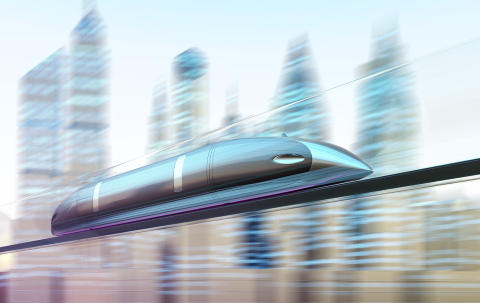
The first quarter of the 21st century is characterized by demographic and social change, urbanization, digitization and data, new technologies, and the challenges of global climate change. These are topics that will continue to shape the second quarter: Sustainable and smart mobility offerings will create more opportunities for individuals and society. But reconciling individual and societal desires is becoming increasingly important, especially for spatial mobility. After all, more traffic also leads to higher noise levels, more emissions, and more resource consumption. To achieve a high quality of life while still living sustainably, mobility concepts need to be conceived comprehensively. The redesign and transformation of urban and rural mobility of a region are important focus topics for every country in the world.
Clearly, the future of mobility will require compromises, and a change in habits and thought patterns that must be shared by politics and society. Factors such as comfort, time, infrastructure, costs, and personal willingness will play a significant role in this process – they determine the choice of means of transport. At the same time, technologies, data, and digital services in the sense of smart mobility will become increasingly important building blocks for better concepts. Digitization has been one of the megatrends for years and is continuously changing the private and professional world – including spatial mobility. The open handling of data, and information being shared intelligently and in real time ensure improved route planning as well as an efficient choice of means of transport. Thanks to this development, connected and autonomous vehicles will assume a key position in the mobility revolution. Likewise, decarbonization is ensuring a transition and is closely linked to digitalization. Zero-emission vehicles such as electric cars are changing habits and go hand-in-hand with sharing concepts and the public transport sector.
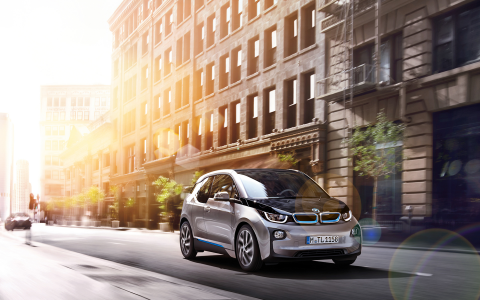
A successful energy revolution and the associated expansion of renewable energy sources for emission-free production of green electricity will play a central role. With power semiconductors for efficient and climate-friendly power generation, Infineon has played a leading role in components for wind power and photovoltaic systems for decades. We have also established a reputation as a thought leader in the automotive industry with efficient solutions: For electromobility, Infineon is already successfully supporting solutions for a climate-friendly and carbon-free future in automotive semiconductors and system solutions. Discover more about energy-efficient and autonomous driving as well as our smart technologies for safety and connectivity on our "Passenger Car" topic page.
One thing is certain: low-emission and zero-emission means of transport, in combination with digital possibilities, are a sustainable solution. These include electric cars, hybrid cars or even fuel cell cars. You can learn more about hydrogen, its potential in mobility and how Infineon is driving development in this area in our article: "Hydrogen – the drive of energy transition?"
Sustainable mobility concepts are beneficial to both the private and economic sectors of society. However, individual acceptance and experience will be decisive for the individual: What is the most comfortable way for me to get to my destination? Wow much time does it take? How sustainable is it? What is the price – and is it worth paying to me?
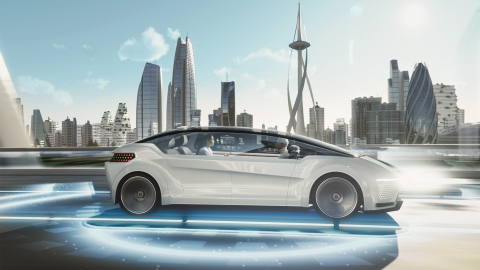
One of the big trends is electromobility: Quiet and efficient, battery-powered electric cars have already changed the way we travel. Especially in private transport, they represent the environmentally friendly alternative to combustion engines – supported by the continuous expansion of public charging stations. Independently of this, the own electric car can be charged at home. Some models also serve as energy storage units and can feed the electricity back into the grid as needed. Depending on the model, purely electric ranges (WLTP) of over 700 km are already possible with one charge; and the trend is rising.
On the road to CO2-neutral transportation, electric mobility is building an important bridge to the future. We answer the most important questions about electromobility here: "What you need to know about electromobility". Hybrid cars are another alternative: They combine the advantages of an electric drive with those of a conventional combustion engine: On short distances, a hybrid car benefits from the electric drive, on longer distances from the range of a combustion engine. You can find out more about how hybrid cars work in the article: "All you need to know about hybrid vehicles".
Technologies and semiconductor solutions from Infineon are essential building blocks for all types of private, public, and commercial mobility: For example, they ensure that a battery's electricity is efficiently converted into motion and that an efficient conversion increases the range. In addition, Infineon's solutions support the infrastructure of charging systems for batteries and increase the speed of the charging process. After all, in addition to electricity from renewable energy sources, seamless charging is also of great importance. You can find out how we, as a pioneer and market leader in power electronics, are contributing to this on our "Charging Infrastructure" topic page.
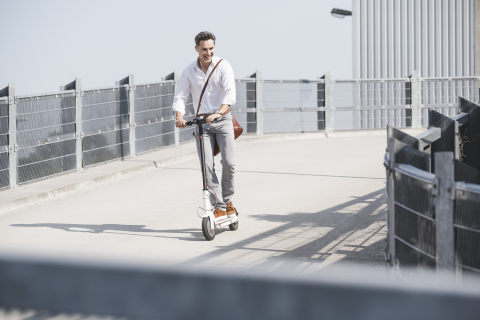
In the field of micromobility, e-scooters and e-bikes have become established; as have electric buses, trucks, and delivery vans in the commercial vehicle sector. Transport methods geared for a short distance have many potentials: e.g., the reduction of noise and pollution. In return, they enable more flexibility, better availability, and also a faster as well as more economical delivery service for service providers from the catering industry. Learn more about how we enable better energy efficiency with our technologies and support manufacturing companies in the development of light vehicles on our "Micromobility" topic page.
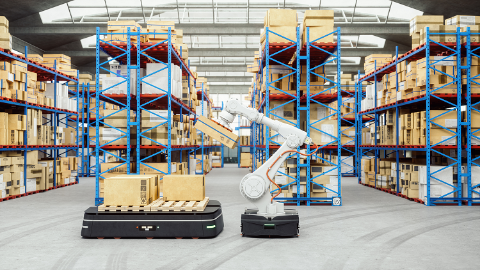
In its "Overall Concept for Climate-Friendly Commercial Vehicles," the German Federal Ministry of Transport and Digital Infrastructure is actively driving the path to climate-neutral logistics. By 2030, the target is for one third of the mileage in heavy road freight transport to be electric or achieved using electricity-based fuels such as hydrogen, also known as e-fuels. One example of how power semiconductors from Infineon support the electricity-based, climate-neutral production of hydrogen is by increasing energy efficiency in the provision of electricity. Forms of electric mobility in commercial vehicles also play a key role in the European climate and transport policy targets for 2030. On our "Freight Transport" topic page, you can learn which technologies we are using to ensure that commercial vehicles can drive with zero emissions.
Apart from climate neutrality, a combination of autonomous driving and electromobility is bound to play a crucial role on the long run. This would make freight transport more energy-efficient and sustainable. One method to achieve this is through optimized planning such as real-time navigation. Mobility thus becomes a "seamless service" – a seamless communication and provision of services. Yet, security and regulatory issues are still a challenge on the way to public transport. This contrasts with port terminals, warehouses, and airports, where autonomous mobility concepts are already in use.
Connected, electric-powered vehicles show great potential in one public sector: municipal transport. For service and transport trips, public transport, waste collection or load transport, the future is electric. In logistics, advances in transportation will improve the speed and predictability of mobility. This in turn will benefit supply chains as well as production processes of the industry. Learn more about electric commercial vehicles and how Infineon contributes to this in our article: "Opportunities of electrified commercial vehicles".
Rail-based freight transport is at the center of climate-friendly logistics. Due to significantly lower CO2 emissions, rail transport ranks better when compared to other commercial vehicles such as trucks. The energy required to drive by rail is so low that one freight train can replace up to 52 trucks. One benefit is the reduced number of trucks driving on roads and thus resulting in less traffic density. Additionally, battery-electric as well as fuel cell-based trains offer much potential for climate-neutral transport of goods.
Electric ships and aircrafts are two additional fields where Infineon is driving technological development and networking worldwide. With efficient power semiconductors, components for batteries that are as light as possible, or even energy-saving technologies, Infineon enables future-proof solutions for passenger and freight transportation. Get an exciting outlook and interesting information in the articles "Why ships of the future will run on electricity" and "E-Planes and Drones: Flying with Electricity".
One of the critical building blocks for achieving the climate targets of the Paris Agreement by 2050 will be the comprehensive transformation of commercial vehicles and logistics. Our sustainability responsibility and how we as a company are committed to a better environment can be found on our "Sustainability at Infineon" page.

Socially responsible, environmentally friendly, inexpensive and attractive for young and old – urban mobility is a complex issue characterized by multimodality. The term smart city is frequently used in this context: With the help of modern communication and information technologies as well as innovative and sustainable concepts, the quality of life for residents should increase. At the same time, a smart city also creates smart mobility: Utilizing intelligent networking in transportation systems makes the method of transportation more time- and energy-efficient. The keyword here is "Mobility as a Service" (MaaS). One example for MaaS is an app through which everything can be handled conveniently: finding e-scooters or bike sharing, booking transportation, and digital payment. To find out how Infineon is helping to increase convenience through MaaS while at the same time ensuring the security of digital payment systems, visit the "Mobility as a Service" topic page.
Today, it is not necessary to own a means of transportation. It is possible to profit from smart and local mobility options in public transportation. The method to get from A to B is determined individually. The personal life situation but also subjective perception play a role for each individual in their choice of transport. Public transport is a key component of sustainable mobility. Find out how we at Infineon are contributing to this with intelligent ticketing and payment systems as well as innovative technologies for greater energy efficiency on our "Public Transport" topic page.
Mobility in the countryside requires an equally smart solution as in the city. Yet it differs fundamentally from the needs of urban regions. The distances are often longer: whether to work, to school or to do daily shopping. Despite increasing urbanization worldwide, there is a continued high demand for mobility in rural regions that needs to be rethought. One of the major challenges here is to create attractive and inexpensive alternatives to private cars by strengthening public transportation and making it an attractive alternative.
Autonomous shuttle buses are also a particularly interesting option for rural areas. They cover lightly used areas of local public transport well on-demand via smartphone app – i.e., without a fixed timetable. In 2020, Antora Mohsena Haque and Candace Brakewood at the University of Tennessee summarized 19 pilot studies on the use and state of practice of autonomous shuttle buses in the American region.
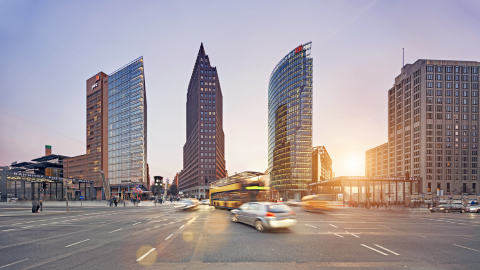
Autonomous driving
Driving from A to B without having to steer manually: The possibilities of autonomous driving are creating new mobility concepts. Self-driving cabs and buses, for example, can be rented on demand. The advantages: Waiting times are reduced, the search for a parking space is eliminated – and children can be driven safely from door-to-door without a driver's license.
Benefits will also accrue to delivery services, which could use autonomous-driving delivery robots to distribute parcels, food, or even nursing and hospital supplies. The so-called "last mile" in particular represents a high-cost factor for service providers, which could be optimized with autonomous concepts.
Rail transport
Rail transport also offers an exciting development that is more environmentally friendly, more efficient and faster than an airplane, while also being cheaper than a modern train: the Hyperloop. First presented as an idea in 2013, test tracks are now under construction around the world. Research is underway into market-ready solutions for the high-speed electric transport system, which can travel at speeds of up to 1,000 kph.
Air transport
The future is also exciting in the air: In 2020, the first electric aircraft received type certification, while prototypes for electrically powered as well as hydrogen-powered passenger aircrafts are already under development. A trend that is also reflected in maritime transport with the development of alternative ship propulsion systems.
Further technological advances and research are necessary to be able to offer a comprehensive, traffic-safe autonomous service. Infineon is driving developments worldwide with leading, advanced technologies and efficient power semiconductors, system solutions, as well as sensor and connectivity solutions.
Last update: December 2022